A feasibility study has concluded that by 2050, Ireland could generate at least €2.55 billion ($2.8bn) in revenues and create around 1,000 skilled jobs by producing its own sustainable aviation fuel. The research was led by SAF supplier SkyNRG and SAF facilitation and advocacy group SFS Ireland, backed by Boeing and aircraft lessors Avolon and ORIX Aviation. Their report finds the country would need 10 production plants, each with an 80,000 ton capacity, to meet its own EU-mandated SAF requirements by 2050. Significant additional benefits would also accrue if SAF was produced in Ireland for export. It identified the country’s best SAF production pathway as power-to-liquid (PtL), through which renewable energy is used to create eSAF by combining green hydrogen with biogenic CO2. But it said significant research, development and government incentives would be needed to kick-start the sector.
The report, ‘Ireland’s Sustainable Aviation Fuel Opportunity’, was launched by Ireland’s Minister for Enterprise, Trade and Employment, Simon Coveney, who said the government was committed to supporting EU and global actions to help cut harmful emissions from aviation, and welcomed “the proactive approach from the aviation sector to progress its own net zero commitments.”
The European Union’s ReFuelEU aviation initiative requires oil companies to gradually increase the proportion of SAF in aircraft fuel supplied at EU airports, increasing from 6% by 2030 to 70% by 2050.
“The European Green Deal has set ambitious targets for reducing net emissions by at least 55% by 2030, when compared to 2019 levels, and to be the first climate-neutral continent by 2050,” said Coveney. “This research shows there are clear future economic benefits from the green economy, which can create new jobs and exciting new business ventures. We look forward to engaging further with industry to explore Ireland’s sustainable aviation fuel potential.”
Ireland currently imports all its aviation fuel. The year-long SAF study was conducted to assess the viability of commercial production using local feedstocks, and focused on a minimum annual output of 100,000 tons of the fuel, commencing before 2030.
Based on RefuelEU SAF mandates for Ireland, the report says three production plants would be needed to deliver 230,000 tons by 2035, with an estimated economic value of €800 million, and 10 plants to deliver 800,000 tons by 2050, valued at €2.55 billion.
It indicated a large potential existed for PtL fuels produced with energy generated by offshore wind turbines but added SAF produced using bio-based intermediates such as renewable natural gas could expedite production to meet the advanced biofuels portion of the ReFuelEU mandate.
To help stimulate development of SAF and green hydrogen sectors in Ireland, the report highlights the need for public-private collaboration and support mechanisms including capital allowances, tax credits, guaranteed minimum pricing and investment incentives. It also urges funding and promotion of SAF technologies through third-level institutions and government entities such as Enterprise Ireland and Science Foundation Ireland.
It recommends SAF production plants should be considered in Ireland’s industrial planning processes, investment is needed in hydrogen storage and transport, and operation and planning of the electricity grid should be optimised to resolve congestion in power delivery.
“Significant progress is required for Ireland to be able to develop eSAF at scale, particularly to ensure renewable power is available on the scale required for production of hydrogen in the required quantities,” cautions the report. “The increased levels of offshore wind power generation that government initiatives are targeting by 2030 will put the country in a much stronger position to develop a domestic SAF industry.”
Sheila Remes, Boeing’s VP Environmental Engagement and Business Development, said Ireland’s potential for growth in renewable energy made it a prime location for SAF production.
SkyNRG CEO Philippe Lacamp, added: “Ireland has an opportunity to combine its renewable resources, skilled workforce and the right policy environment to create a thriving SAF industry. While there is still work to be done, we are convinced that Ireland can play a significant role in creating this SAF production capacity.”
Darren Carty, Partner, SFS Ireland, said the feasibility study was “the foundation for establishing a low-carbon SAF industry in Ireland. We look forward to advancing collaboration and essential public-private partnerships.”
Andy Cronin, CEO of aircraft lessor Avolon, said: “Large scale deployment of SAF and the transition of the global fleet to new technology aircraft are two of the biggest near-term drivers that can progress the sector’s net zero by 2050 goal. It is going to require large levels of investment and close collaboration across many stakeholders, and we value the minister’s engagement to explore Ireland’s sustainable aviation fuel opportunity.”
Marie-Louise Kelly, CFO of ORIX Aviation, and Chair, Aircraft Leasing Ireland, a group representing the Irish aircraft leasing industry, said the SAF report had identified multiple opportunities for the country. “Along with our sectoral experience [in aviation] we were also able to add the wider ORIX Group’s extensive expertise in renewable power generation to the study,” she added. “We welcome the minister’s commitment to engage on SAF production and look forward to exploring ways to position Ireland at the heart of the global drive to Net Zero 2050.”
Meanwhile, daa, the operator of Dublin and Cork Airports, has welcomed the adoption of the ReFuelEU Aviation regulation.
“There’s a willingness amongst airlines to use SAF but there currently isn’t enough of it available, leading to prices being higher than for conventional fuels,” said Andrea Caroll, Group Head of Sustainability at daa. “The regulation is an important step towards reducing the aviation industry’s carbon footprint that can have a notable impact in the very near term.
“We’re fully committed to reducing overall carbon emissions at our airports and are able to fully facilitate SAF once there is demand and availability. daa is ready to facilitate the increased transition to SAF and we are working hard with airlines and all relevant stakeholders at both airports to meet our net zero 2050 targets ahead of time.”
The airport operator has announced proposals to incentivise airlines to operate lower CO2 emission aircraft at Dublin Airport. A low emissions discount would apply to aeronautical charges, with airlines that fly high emission aircraft charged more.
Photo: daa


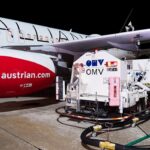
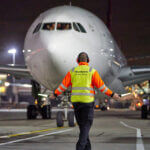
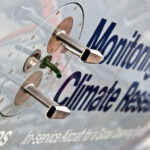



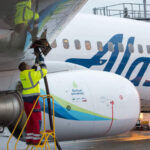
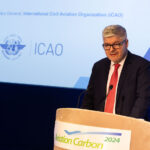
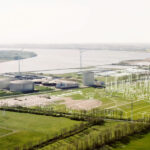
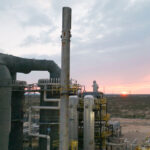

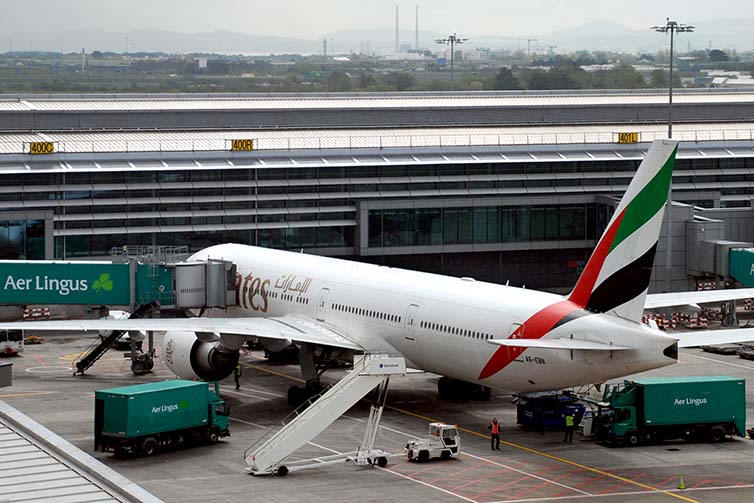


More News & Features
Progress on decarbonising the airline sector has been slow this year, says IATA chief
EASA releases status report on Europe’s SAF production and readiness to meet blending targets
New study highlights differing strategies and barriers to decarbonising aviation in UK and Europe
New partnerships formed to drive e-SAF production in Nordic markets
IAG continues to go big on e-SAF as it inks 10-year offtake agreement with Infinium
US on the pathway to achieving its 2030 SAF Grand Challenge target, says DOE report